From July 5th to August 1st, the Korean Cultural Center in Brazil (KCC), located in São Paulo, hosts a new exhibition dedicated to showcasing the richness of Korea’s culinary culture. The pop-up event, “Universe K-Food Brazil” is organized by the aT Center São Paulo, a government agency affiliated with the Ministry of Agriculture, Food and Rural Affairs of Korea. The explosion of Korean flavors arrives with an interactive and free proposal that has delighted Brazilians of all ages.
Kim Cheul Hong, director of the Korean Cultural Center in Brazil, said in a statement:
“I sincerely thank everyone present today. It is a great joy for us to hold this event in partnership with the aT Center, which promotes the distribution of Korean food in Brazil. As the director of the Cultural Center, I hope this event will also be an opportunity for you to discover and experience Korean cuisine in a new and interesting way. I wish that everyone enjoys the products presented, both for their taste and appearance, and that the audience here has fun with all the activities prepared. I believe this exhibition will provide a joyful opportunity to experience Korean culture through its food products.”
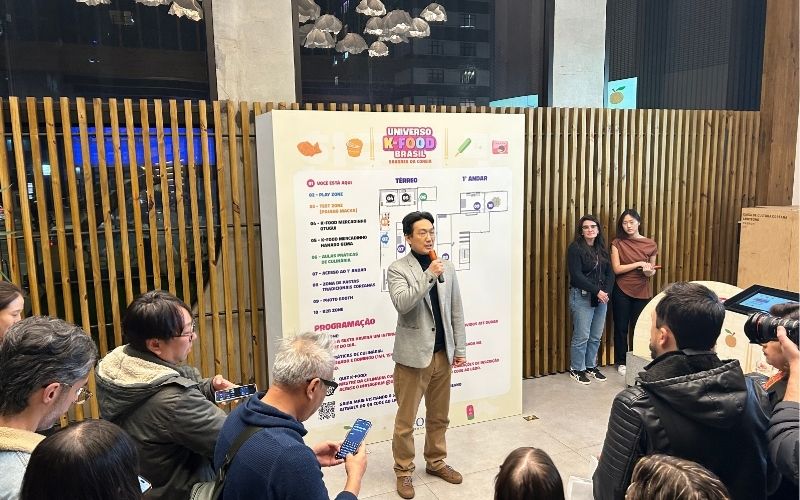
This initiative offers visitors a sensory and immersive experience that combines gastronomy, traditional culture, and interactivity, inviting the Brazilian public to dive into the flavors, ingredients, and symbols that make up Korean cuisine.
At the invitation of the KCC, I attended the event’s preview on July 4th, which featured a sneak peek of the attractions offered to the public, including activities, tastings, and interactive spaces that reveal the stories and cultural value behind traditional dishes.
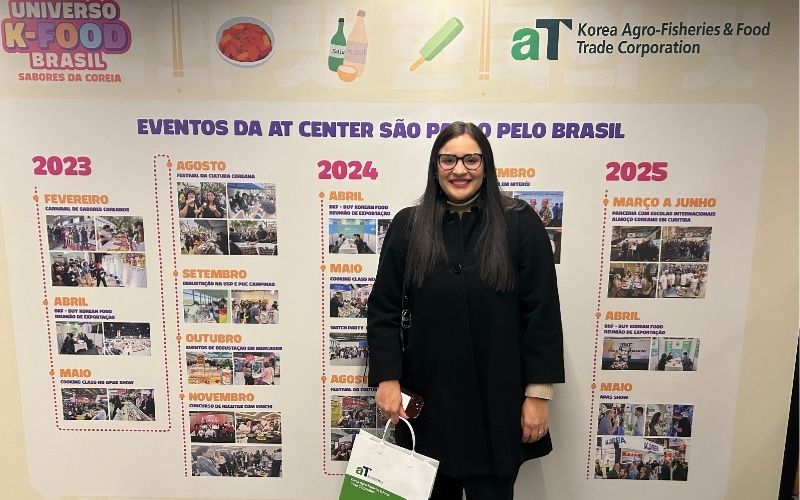
For the event, the KCC exhibition space was divided into four areas: the game zone, the tasting zone, a convenience store, and a B2B (Business to Business) area. The experience offers an immersion in some of the most sought-after Korean flavors worldwide among fans of Korean culture, such as soju, ramyeon, and snacks. Additionally, visitors can find a special selection of healthy products, including kombucha, juices, and tofu crackers.
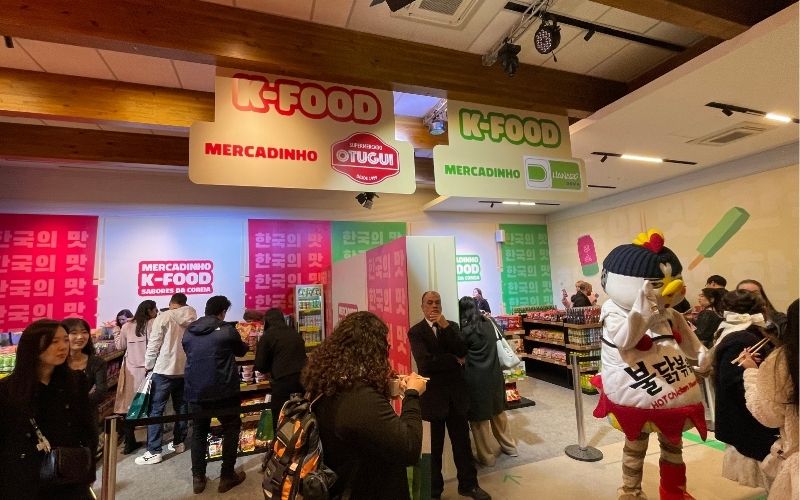
The venue was decorated with elements referencing both Korean pop and traditional culture, featuring colorful totems, authentic packaging colors, playful illustrations, and explanations about each product. Guests received a welcome kit from the aT Center containing an exclusive Korean fan from the exhibition, vouchers to spend at the convenience stores, and a fridge magnet. All the products presented to the public are available for purchase at the Universe K-Food Brazil convenience store.
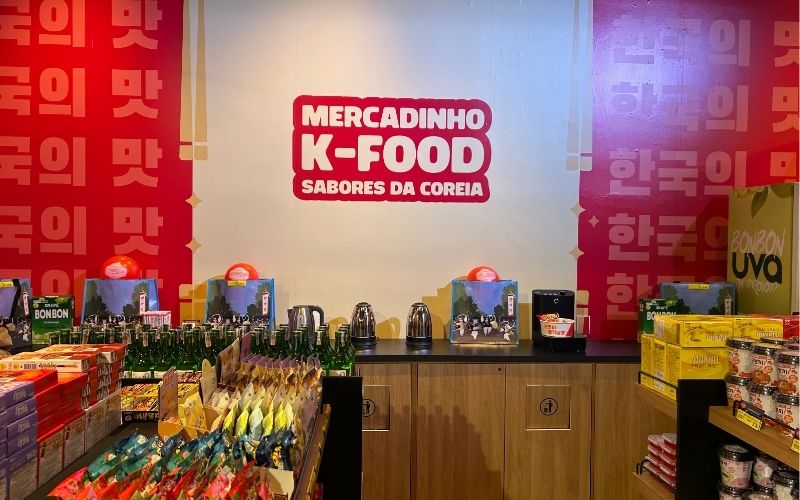
Photo Booth
A must-see attraction for travelers to Korea, the photo booth is very popular throughout Asia, in K-dramas, and among tourists. Personalized and themed, these booths offer visitors a visual keepsake of their participation in the event and can make you feel nostalgic, as if you were living your own drama. Visitors could use fun accessories inspired by Korean dishes, such as glasses and cords, and take printed photos home.
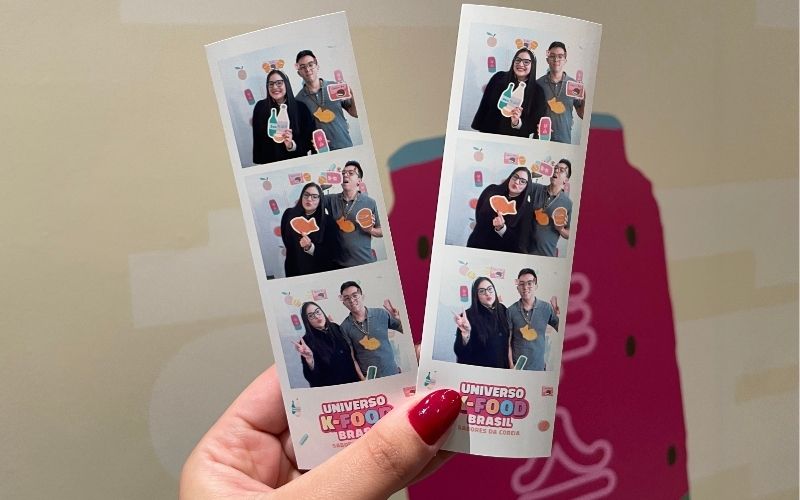
Game Zone
In the space dedicated to games, visitors can enjoy activities related to Korean cuisine:
The Jeotgarak Challenge is a traditional chopstick game where participants test their skills by trying to pick up grains using chopsticks. Each participant has 15 minutes to collect as many grains as possible. The activity can be played individually or in pairs. The Choice Game is based on the question “What is your perfect K-Food?” By answering a few questions, participants receive a recommendation of a product from the exhibition they can try or take home. And there’s no shortage of food and new things to discover at the exhibition.
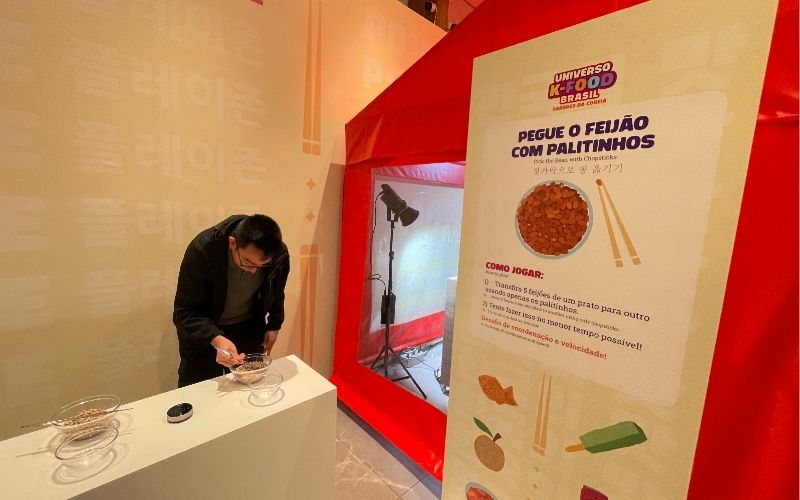
Tasting Zone
This area is dedicated to sampling a selection of Korean products that are not yet available in the Brazilian market. During the exhibition, visitors can taste various snacks, such as potato- and rice-based biscuits, pear juice, the traditional rice wine (makgeolli), mushroom-shaped cookies with chocolate and vanilla flavors, among others.
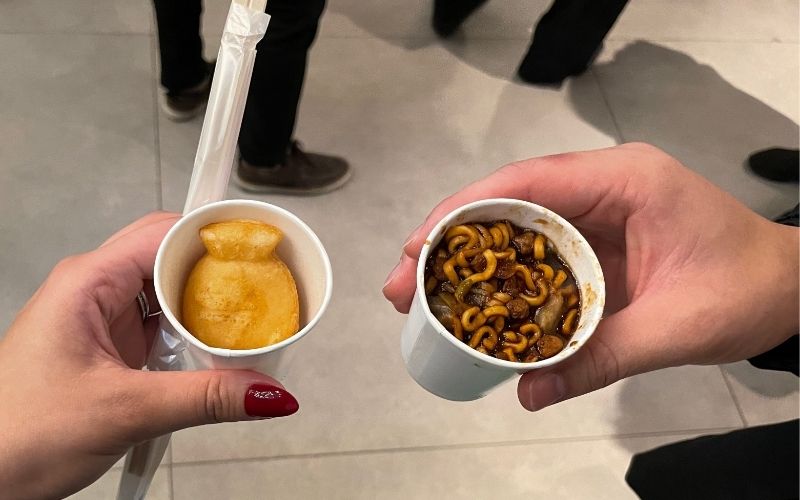
Traditional Korean Pastes Zone
One of the main ingredients in Korea’s most popular dishes takes center stage here. This space is fully dedicated to presenting and tasting famous traditional Korean pastes. Visitors can learn about their uses, properties, and try some of them. Among the pastes are Gochujang, a fermented mixture of chili pepper, glutinous rice, and soy that adds a sweet and spicy touch to many Korean dishes, including popular ones like bibimbap and tteokbokki.
Doenjang is a fermented soybean paste made from soy and brine, commonly used in soups and sauces. A well-known dish that features this paste is Doenjang Jjigae (된장찌개). Ssamjang, one of Korea’s most popular pastes, pairs especially well with barbecue. In Korean, the word “ssam” (쌈) refers to “wrapped” and “jang” (장) to “paste” or “thick sauce,” forming the meaning “wrap sauce.”
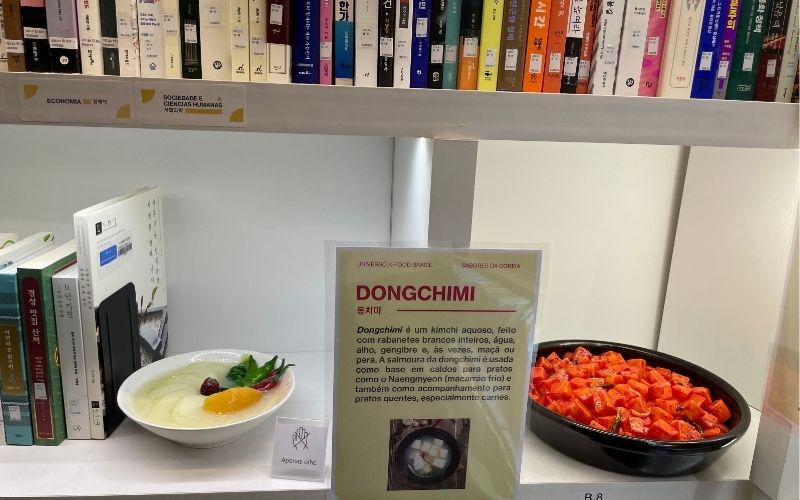
Starting July 5th, the Korean Cultural Center offers short practical classes with tastings, where participants can prepare and sample Korean dishes using ready-to-eat products. On July 13th, visitors can join the K-Food Quiz: Master of Cuisine, a fun quiz inspired by the Korean entertainment show Golden Bell. Participants must answer questions correctly to stay in the game; those who answer wrong are eliminated, and the winner will receive a special prize.
As an honorary reporter and passionate admirer of Korean culture, it was a very special experience to witness Universe K-Food Brazil up close. The exhibition goes far beyond gastronomy: it connects flavors, emotions, and memories. Each space was carefully designed to bring the Brazilian public closer to a universe that, though geographically distant, has become increasingly present in our daily lives.
I observed the delight of people trying Korean food for the first time, playing games, taking photos as if they were in a drama, and learning more about ingredients they might only have known by name. For me, it was moving to see how food can become a cultural bridge, awakening curiosity, empathy, and joy. I know many people who wish to connect more deeply with Korean culture and cuisine, so this opportunity—besides being a free exhibition—is often their first contact with this world. Being part of it is truly meaningful.
Events like this reaffirm how vibrant, dynamic, and meaningful the cultural exchange between Brazil and Korea continues to be. I left the event with new flavors in my memory, fun photos, and the certainty that Korean culture keeps winning hearts here—one step at a time, or better yet, one dish at a time.
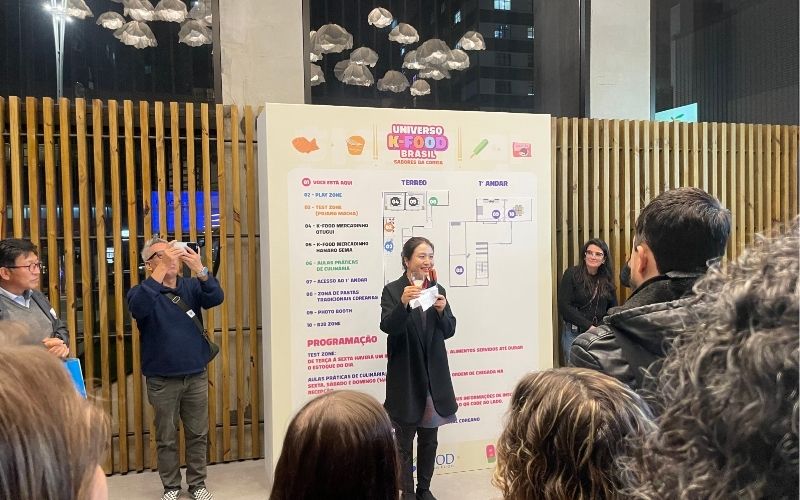
To celebrate the launch, Yousun Jung, director of aT Center São Paulo, thanked everyone present and concluded:
“Let us all raise our glasses and make a toast to the inauguration of Universe K-Food Brazil. When I say ‘Flavors,’ you say “from Korea.”
How about this article?
- Like9
- Support1
- Amazing10
- Sad0
- Curious0
- Insightful1


